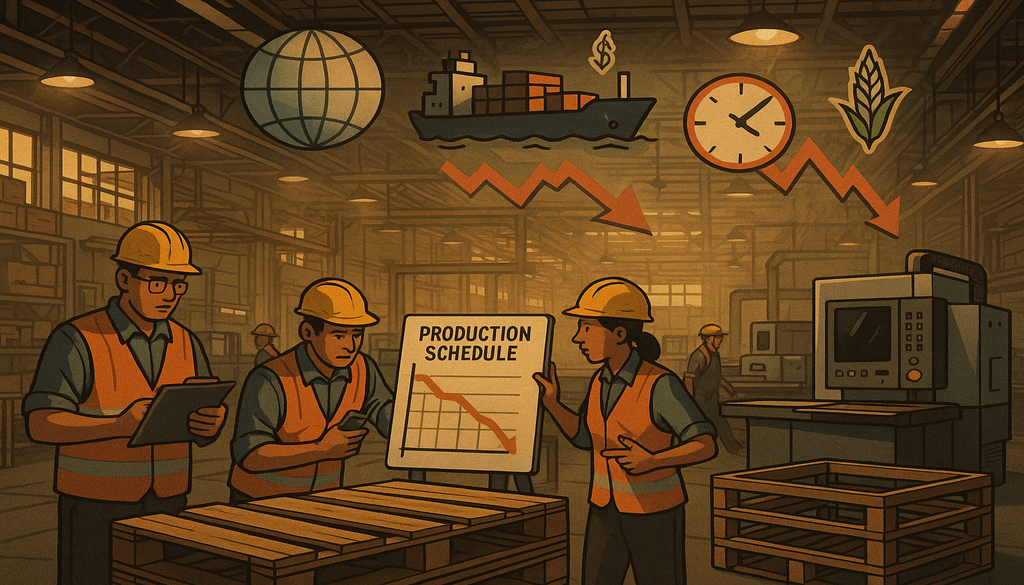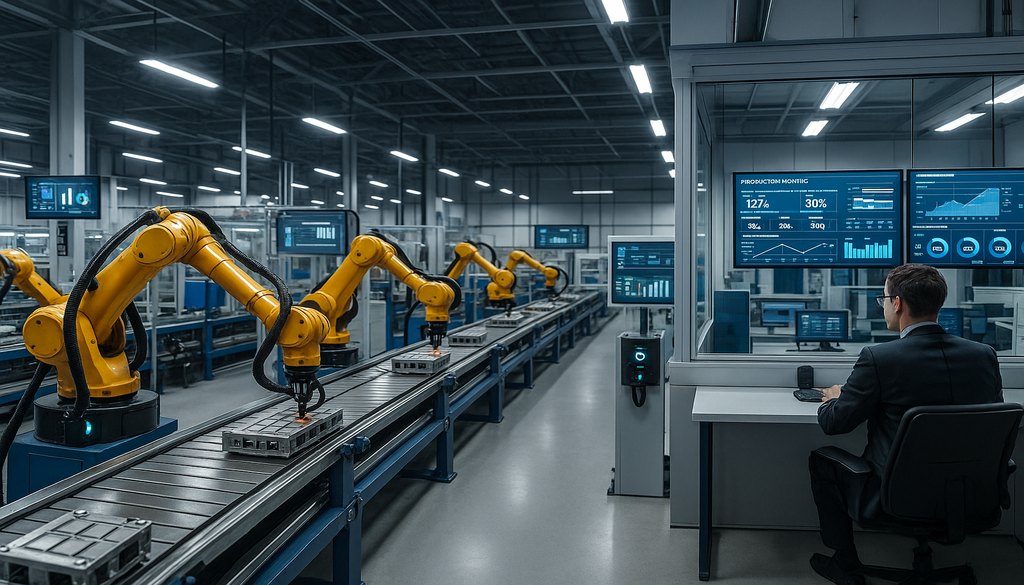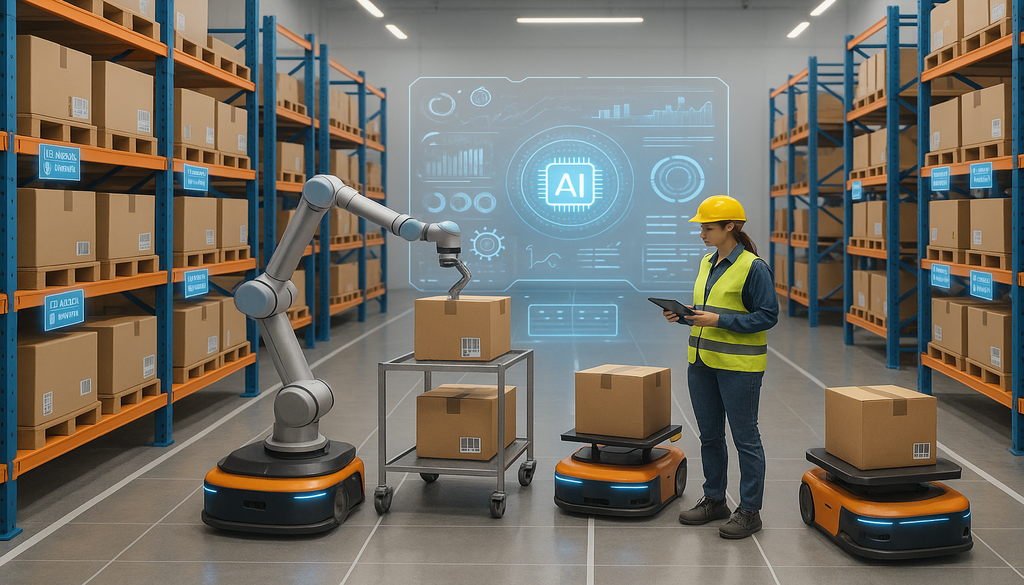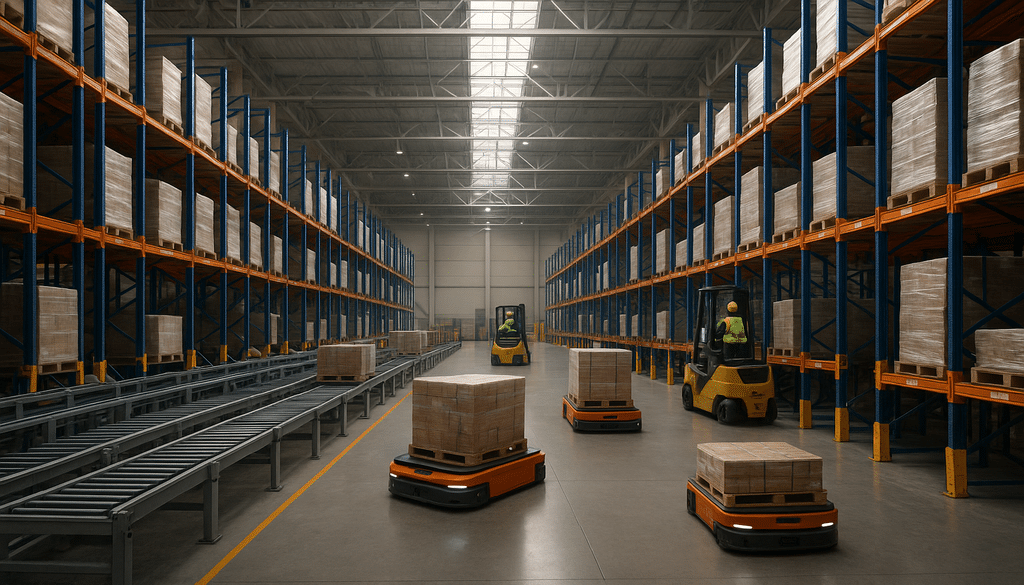Understanding the Challenges of Volatile Manufacturing Supply Chains
Today's manufacturing landscape faces unprecedented volatility driven by global economic fluctuations, geopolitical tensions, and rapidly shifting consumer demands. These challenges create a perfect storm for supply chain disruptions that can cripple production capabilities and damage customer relationships. Manufacturing organizations frequently encounter unpredictable raw material availability, which forces production schedules to be continuously adjusted and often leads to costly delays. The just-in-time inventory model, while efficient in stable environments, becomes increasingly vulnerable when suppliers face their own disruptions, creating a cascading effect throughout the entire supply network. These volatility factors directly impact manufacturing efficiency, often resulting in underutilized capacity during shortages and scrambling to meet demand during unexpected surges.
The financial implications of supply chain volatility extend beyond immediate production concerns. Manufacturers must contend with price fluctuations in raw materials, which can erode profit margins when locked into fixed-price contracts with customers. Transportation disruptions further complicate matters, with port congestion, driver shortages, and fuel price variations adding layers of uncertainty to delivery timelines and costs. Perhaps most concerning is the difficulty in forecasting and planning under volatile conditions, where historical data becomes less reliable as a predictor of future patterns. This unpredictability makes it challenging to optimize inventory levels, plan production capacity, and allocate resources effectively, often resulting in either excess inventory carrying costs or missed sales opportunities due to stockouts.
Labor market instability represents another significant challenge for manufacturing supply chains. Workforce shortages, high turnover rates, and shifting skill requirements create operational vulnerabilities that can severely impact production continuity. When experienced operators leave, they take valuable institutional knowledge with them, potentially reducing operational efficiency and product quality. Additionally, the training of new workers requires substantial time and resources, creating lag periods where productivity may suffer. These workforce challenges are particularly problematic in manufacturing environments where specialized skills are required for specific production processes or equipment operation.
Quality control issues tend to multiply in volatile environments where rushed production, substitute materials, or less experienced workers may be utilized to meet demands. These quality variations can trigger customer dissatisfaction, returns, warranty claims, and potential damage to brand reputation. Furthermore, regulatory compliance becomes more difficult to maintain when processes are constantly changing to accommodate supply chain disruptions. The documentation and validation requirements for industries like pharmaceuticals, food processing, or aerospace manufacturing can become overwhelming when production conditions lack stability and predictability.
The Role of Automation in Enhancing Supply Chain Resilience
Automation technologies serve as powerful stabilizing forces in volatile manufacturing environments by introducing consistency and predictability into otherwise chaotic systems. By removing human variability from repetitive processes, automated systems maintain operational continuity regardless of external pressures or workforce fluctuations. Robotic process automation (RPA) can handle routine procurement tasks, monitoring inventory levels and automatically triggering purchase orders when supplies reach predetermined thresholds. This proactive approach prevents the production delays commonly associated with manual monitoring systems that might miss critical reorder points during busy periods. Advanced manufacturing execution systems (MES) further enhance resilience by optimizing production scheduling in real-time, adjusting to material availability and prioritizing orders based on urgency, resource constraints, and profitability considerations.
The data collection capabilities inherent in automated systems provide manufacturing organizations with unprecedented visibility throughout their supply chains. IoT sensors deployed across production facilities and distribution networks continuously transmit operational data, creating a comprehensive digital twin of the physical supply chain. This enhanced visibility allows managers to identify potential bottlenecks before they impact production and make informed decisions based on current conditions rather than outdated reports. Automated analytics platforms can process this wealth of data to identify patterns and anomalies that might indicate emerging problems, essentially functioning as an early warning system for supply chain disruptions. This predictive capability enables proactive responses rather than reactive scrambling, significantly reducing the impact of supply chain volatility.
Several manufacturing companies have already demonstrated the effectiveness of automation in mitigating supply chain volatility. A leading automotive components manufacturer implemented an automated inventory management system that reduced stockouts by 78% while simultaneously decreasing overall inventory holding costs by 23%. The system's predictive analytics capabilities allowed them to anticipate supplier issues and adjust production schedules accordingly, maintaining customer delivery commitments despite upstream disruptions. Similarly, a food processing company deployed robotic palletizing and warehouse automation technologies that reduced their order fulfillment time by 65% while improving accuracy to 99.8%. This enhanced capability allowed them to respond more quickly to unexpected demand surges and maintain service levels during seasonal peaks without requiring temporary labor.
Automation also supports rapid reconfiguration capabilities that are essential in volatile manufacturing environments. Programmable automation allows production lines to quickly switch between product variants with minimal downtime, enhancing responsiveness to changing market demands. Modern flexible manufacturing systems can be reprogrammed rather than physically reconfigured, enabling rapid adaptation to product changes or volume fluctuations. This agility is particularly valuable when supply chain disruptions force manufacturers to substitute materials or change production sequences, allowing operations to continue with minimal interruption. The ability to quickly pivot production capabilities represents a significant competitive advantage in unstable markets where customer needs and material availability can change with little notice.
Key Automation Technologies for Manufacturing Supply Chains
Robotic process automation (RPA) has emerged as a foundational technology for streamlining administrative aspects of manufacturing supply chains. By automating repetitive tasks like purchase order processing, invoice management, and supplier communications, RPA reduces processing time by up to 90% while virtually eliminating error rates. These administrative efficiencies directly impact manufacturing operations by ensuring timely procurement of materials and maintaining accurate inventory records. More sophisticated cognitive automation platforms incorporate machine learning capabilities that can handle exceptions and make judgment-based decisions, such as evaluating supplier quotes or identifying potential quality issues based on historical performance data. These intelligent systems continually improve their decision-making capabilities through experience, becoming increasingly valuable assets in managing supply chain complexity.
Advanced robotics technologies are transforming physical operations within manufacturing facilities and distribution centers. Autonomous mobile robots (AMRs) navigate warehouse environments independently, transporting materials between workstations and reducing dependency on manual material handling. Collaborative robots, or cobots, work alongside human operators to perform repetitive or ergonomically challenging tasks, enhancing productivity while reducing workplace injuries. These robotic systems can be rapidly redeployed as production requirements change, providing the flexibility needed in volatile manufacturing environments. In distribution operations, robotic picking systems using computer vision and AI algorithms have demonstrated the ability to handle a wide variety of product shapes and sizes with accuracy rates exceeding 99.5%, significantly improving fulfillment capabilities during demand spikes.
Artificial intelligence and machine learning applications provide predictive capabilities that are particularly valuable in volatile supply chains. Demand forecasting algorithms that incorporate external data sources like weather patterns, social media trends, and economic indicators can achieve 30-50% improvements in forecast accuracy compared to traditional methods. These enhanced predictions allow manufacturers to optimize inventory levels and production scheduling, reducing both excess inventory costs and stockout risks. AI-powered supplier risk assessment tools continuously monitor global events, financial indicators, and supplier performance metrics to identify potential disruptions before they impact production. This early warning capability enables proactive mitigation strategies like dual sourcing or buffer inventory for critical components, enhancing overall supply chain resilience.
Internet of Things (IoT) technologies create the digital nervous system that connects automated manufacturing operations. Smart sensors deployed throughout production facilities and logistics networks generate continuous streams of operational data, from equipment performance metrics to environmental conditions in storage facilities. This data visibility enables condition-based maintenance programs that can predict equipment failures before they occur, preventing unplanned downtime that would otherwise disrupt production schedules. IoT-enabled inventory management systems track materials throughout the supply chain in real-time, providing accurate visibility that reduces safety stock requirements while ensuring material availability. Connected transportation monitoring systems provide location and condition data for in-transit shipments, allowing for proactive intervention when delays or quality issues are detected.
Integrating Automation into Existing Manufacturing Systems
Successful automation implementation begins with comprehensive assessment and strategic planning rather than haphazard technology adoption. Manufacturing organizations should first conduct thorough process mapping to identify high-impact opportunities where automation can address specific pain points in their supply chain operations. This assessment should evaluate processes based on multiple criteria, including volume, standardization level, error rates, and strategic importance. Areas with high transaction volumes and standardized processes typically offer the quickest return on automation investments, while processes with high error rates or significant business impact may justify more sophisticated solutions. Organizations should also evaluate their existing technology infrastructure to identify integration requirements and potential limitations that might affect implementation. This preparatory work establishes a solid foundation for automation initiatives and helps prioritize projects for maximum business impact.
Phased implementation approaches minimize operational disruptions while allowing organizations to capture incremental benefits throughout the automation journey. Beginning with pilot projects in contained areas provides valuable learning opportunities and builds internal expertise before expanding to more critical operations. These initial implementations should be carefully monitored with clearly defined success metrics to validate expected benefits and identify potential improvements. As pilot projects demonstrate success, the automation footprint can be gradually expanded using a center of excellence model, where knowledge and best practices are centralized and shared across the organization. This methodical approach reduces implementation risks while allowing the organization to adapt processes and develop necessary skills as automation capabilities mature.
The human component remains crucial when integrating automation into existing manufacturing systems. Effective change management strategies should address workforce concerns about job security and changing role requirements through transparent communication and involvement in the implementation process. Comprehensive training programs must be developed to equip employees with the skills needed to work alongside automated systems and manage exceptions that require human judgment. Forward-thinking manufacturers are developing career pathways that allow employees to transition from routine operational roles to higher-value positions focusing on process improvement, automation oversight, and exception handling. This workforce evolution strategy maintains organizational knowledge while elevating employee contributions to more strategic activities that automation cannot easily replicate.
Measuring the Impact of Automation on Manufacturing Supply Chains
Establishing comprehensive performance metrics is essential for evaluating automation's impact on manufacturing supply chains. Operational efficiency metrics should track improvements in throughput, cycle time, and resource utilization to quantify productivity gains. Quality metrics, including defect rates, rework requirements, and customer returns, provide insights into how automation affects product consistency and conformance to specifications. Cost metrics examining direct labor savings, inventory reductions, and maintenance expenses offer financial validation for automation investments. Service level metrics measuring on-time delivery, order accuracy, and response time to customer requests demonstrate how automation enhances the customer experience. Together, these multidimensional metrics provide a holistic view of automation's impact across the manufacturing supply chain.
Data-driven analysis techniques help organizations extract meaningful insights from performance metrics to guide continuous improvement efforts. Statistical process control methodologies can identify variations in automated processes that might indicate opportunities for optimization or early warnings of potential issues. Comparative analysis examining performance before and after automation implementation provides quantifiable evidence of improvements and helps identify areas where expected benefits have not fully materialized. Root cause analysis techniques can determine whether underperformance is related to technology limitations, integration issues, or process design flaws, guiding targeted improvement initiatives. These analytical approaches transform raw performance data into actionable intelligence that drives ongoing optimization of automated systems.
Several manufacturers have documented significant improvements through strategic automation implementations. A medical device manufacturer implemented an end-to-end automation solution connecting their ERP system with production scheduling, inventory management, and quality control systems. This integrated approach reduced their manufacturing lead time by 62% while improving inventory accuracy from 92% to 99.7%, enabling them to respond more effectively to volatile healthcare market demands. A specialty chemicals producer deployed autonomous guided vehicles (AGVs) and automated storage and retrieval systems (ASRS) in their warehouse operations, reducing labor requirements by 40% while improving order picking accuracy to 99.9%. These improvements allowed them to maintain service levels despite significant demand fluctuations and workforce availability challenges during recent global disruptions.
The long-term strategic advantages of automation extend beyond immediate operational improvements. Manufacturing organizations with advanced automation capabilities demonstrate greater resilience during market disruptions, maintaining higher service levels and capturing market share from less adaptable competitors. The scalability of automated systems allows manufacturers to expand production capacity without proportional increases in labor costs, creating more favorable economics for reshoring or nearshoring operations. This geographic flexibility reduces dependency on extended global supply chains that are vulnerable to disruption. Additionally, automated manufacturing environments typically generate comprehensive digital records of production parameters and quality attributes, facilitating compliance with increasingly stringent regulatory requirements across industries. These strategic advantages position automated manufacturers for sustainable competitive advantage in volatile market conditions.
Conclusion
Automation represents a transformative approach to managing volatility in manufacturing supply chains by introducing predictability, consistency, and adaptability into operations. The technologies discussed—from robotic process automation and advanced robotics to AI-powered analytics and IoT connectivity—create a comprehensive framework for supply chain resilience that can withstand the disruptions characterizing today's manufacturing landscape. By implementing these solutions strategically, manufacturers can simultaneously address immediate operational challenges while building long-term competitive advantages. The documented improvements in operational efficiency, quality consistency, cost reduction, and customer service demonstrate automation's tangible impact on manufacturing performance under volatile conditions.
The implementation journey requires careful planning, phased execution, and ongoing optimization to realize the full potential of automation technologies. Organizations must balance technological capabilities with human factors, developing workforce strategies that complement automation rather than simply replacing labor with machines. This balanced approach preserves valuable institutional knowledge while enhancing organizational capabilities through technology. As manufacturing continues to face unprecedented volatility from global economic shifts, geopolitical tensions, and evolving customer expectations, automation provides a path to operational stability and strategic advantage. Forward-thinking manufacturers who embrace these capabilities now will position themselves to thrive amid uncertainty, turning supply chain volatility from a threat into an opportunity for differentiation.
Frequently Asked Questions (FAQ)
Q1: What are the first steps in automating a volatile manufacturing supply chain?
A1: Begin with a thorough assessment of your current processes to identify bottlenecks that could benefit from automation, followed by setting clear objectives for what you hope to achieve with automation. Conduct comprehensive process mapping to understand interdependencies and prioritize high-impact opportunities based on volume, standardization level, error rates, and strategic importance. Evaluate your existing technology infrastructure to identify integration requirements and potential limitations. Develop a phased implementation roadmap that starts with contained pilot projects to minimize disruption while building internal expertise and demonstrating value. Establish clear metrics to measure success and create a cross-functional team to oversee the automation initiative, ensuring representation from operations, IT, finance, and human resources.
Q2: How does automation help in reducing the impact of supply chain disruptions?
A2: Automation enhances predictability and consistency in operations, allowing for quicker adjustments and responses to unforeseen disruptions in the supply chain. Automated systems provide real-time visibility through continuous data collection, enabling early detection of potential disruptions. Predictive analytics can forecast supply chain risks before they materialize, allowing proactive mitigation strategies. Robotic process automation eliminates human bottlenecks in critical processes, maintaining operational continuity during workforce fluctuations. Automated inventory management systems optimize stock levels based on real-time demand signals, reducing both stockout risks and excess inventory costs. Additionally, flexible manufacturing systems can be rapidly reconfigured to accommodate material substitutions or production sequence changes when primary resources become unavailable.
Q3: Can small to medium-sized manufacturers also benefit from automation?
A3: Yes, there are scalable automation solutions available that can be tailored to the specific needs and budget constraints of smaller manufacturers. Cloud-based automation platforms offer lower initial investment costs and pay-as-you-grow models that align with SME financial capabilities. Collaborative robots (cobots) provide accessible entry points to physical automation without requiring facility redesign or extensive safety infrastructure. Low-code/no-code automation tools enable business users to automate processes without specialized programming skills, reducing implementation costs. Many vendors now offer automation-as-a-service models that eliminate large capital expenditures in favor of operational expenses tied directly to usage or outcomes. Additionally, government programs and manufacturing extension partnerships often provide resources specifically designed to help smaller manufacturers implement automation technologies with reduced financial risk.
Q4: What are the common pitfalls in automating manufacturing supply chains?
A4: Common pitfalls include underestimating the complexity of integration, neglecting the need for staff training, and failing to plan for ongoing maintenance and updates. Organizations frequently attempt to automate broken processes rather than optimizing workflows before implementation. Insufficient data quality and standardization can undermine automation effectiveness, particularly for AI-based systems that rely on accurate historical information. Siloed implementation approaches that fail to consider end-to-end process impacts often create new bottlenecks at integration points. Many companies also focus exclusively on technology while neglecting change management, leading to resistance and underutilization. Overly ambitious implementations attempting too much too quickly can overwhelm organizational capacity for change. Finally, inadequate governance structures for managing exceptions, continuous improvement, and technology evolution can limit long-term success and return on investment.
Q5: Are there any sectors within manufacturing that particularly benefit from automation?
A5: Sectors with high-volume production lines or those requiring precise and repetitive tasks, such as electronics and automotive manufacturing, often see the most immediate benefits from automation. Pharmaceutical and medical device manufacturers benefit significantly from automation's ability to ensure consistent quality and regulatory compliance in highly regulated environments. Food and beverage producers leverage automation to maintain strict hygiene standards while managing short shelf-life products. Chemical processing industries benefit from automated monitoring and control systems that enhance safety while optimizing reaction parameters. Consumer packaged goods manufacturers use automation to handle high-volume, high-variety production requirements with frequent changeovers. Industries with acute labor shortages or hazardous working conditions, such as heavy machinery or metalworking, find particular value in robotics and autonomous systems that reduce dependency on difficult-to-fill positions while improving workplace safety.







